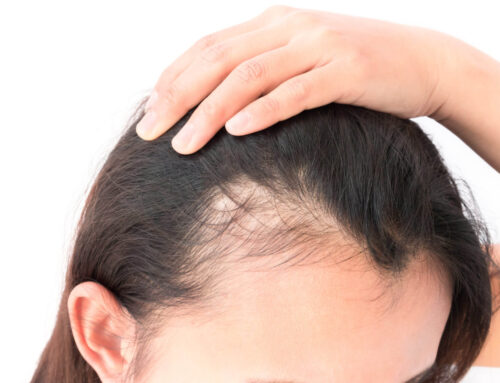How Successful is Hair Transplantation
Hair transplantation in Istanbul, Turkey is an indisputable point as the success rate. 98 percent success is achieved in hair transplantation. In addition, the techniques developed in hair transplantation have a positive effect on the duration and performance of the transplantation. It is possible to say that it gives better results than the herbal medicines used.
How to Perform a Natural Looking Hair Transplant
Hair transplants are done to add more hair to an area on your head that may be thinning or balding. It’s done by taking hair from thicker parts of the scalp, or other parts of the body, and grafting it to the thinning or balding section of the scalp. Worldwide, about 60 percent of men and 50 percent of women experience some form of hair loss. To address this, people often use over-the-counter products, including topical. Hair transplant is another restoration method.
First hair transplant
The first transplant was performed in 1939 in Japan with single scalp hairs. In the following decades, physicians developed different methods such as fue or fut. Over time, surgeons began using mini and micro grafts to minimize the appearance of transplanted hair on the scalp.
Factors That Make Hair Transplants Work Well
1. Picking the Right Doctor
- Finding a Good Doctor: Why it’s vital to pick a doctor who knows what they’re doing.
- Personal Touch: How top doctors make sure to meet the unique needs of each patient.
2. The Tools and Techniques Used
- FUE vs. FUT: Learn about the different hair transplant methods and how they affect your results.
- Modern Tools: How new technology is making hair transplants more successful.
3. What the Patient Brings to the Table
- Good Quality Donor Hair: How having good quality hair to transplant helps the outcome.
- How Age and Gender Matter: How a person’s age and sex can change the results of the transplant.
4. The Talk Before the Surgery
- Keeping Expectations Real: Why it’s important to know what to expect from the surgery.
- Planning Ahead: How getting ready for the surgery can help everything go smoothly.
5. Taking Care After the Surgery
- Following the Rules: Why listening to the doctor’s advice after surgery can help you heal well.
- Healthy Habits: How eating well and living healthy can help the transplant work better.
6. Timing is Everything
- Choosing the Right Time: How picking the right time for surgery can make a big difference.
- Spread Out Sessions: Why having more than one session, spread out over time, might be a good idea.
7. How You Feel Matters
- Happy Patients: What makes patients happy with their results?
- When Things Don’t Go as Planned: What to do if the transplant doesn’t work out and how to move forward.
8. Paying for the Procedure
- Cost Matters: How much the procedure costs and why it matters.
- Is It Worth It?: Figuring out if the benefits of the transplant are worth the cost.
This revised version should be more in line with the Flesch Reading Ease standards, providing a more straightforward and easy-to-understand explanation of the factors influencing the success of hair transplantation.
Does hair transplant work?
Hair transplants are typically more successful than over-the-counter hair restoration products. But there are some factors that need to be known. These are;
- Know that the transplanted hair will fully grow back in an estimated three to four months.
- Like regular hair, transplanted hair will thin over time.
- Remember that hair transplantation can be done in the amount of hair follicles that usually contain hair beneath the skin but no longer grow hair
- If you have epidemic diseases such as hepatitis, there may be changes in hair growth and transplantation technique.
How does a hair transplant work?
A hair transplant usually takes place on an outpatient basis. This means that no longer inpatient stay in a clinic is required and you can go home directly after the procedure. One of the reasons for this is that general anesthesia is not normally used, but only local anesthesia. Adrenaline can be added to the anesthetic to reduce bleeding. So you are awake during the entire time of the hair transplant. Which can be quite exhausting as the surgery lasts between 2 and 8 hours. However, you are allowed to listen to music or watch TV.
Some clinics also offer to take a lunch break or split the transplant into several sessions. The latter is also useful if the treatment area is very large. The surgical team can transplant up to 4,000 grafts per appointment. There are different approaches to hair transplantation and the exact procedure depends on the method used. The two most commonly used methods are called FUE and FUT or DHI techniques. You can roughly imagine the process as follows: The doctor removes hair roots from the back of the head or sometimes from other parts of the body.
The assistant team then prepares these hairs, places them in a special nutrient solution and thus prepares them for re-insertion. The doctor makes tiny cuts or stitches at irregular intervals on the bald areas of skin – this is the only way the result will look natural and not doll-like later on. Using tweezers, he plants the prepared hair roots into the fine wounds. The procedure is followed by a final discussion with the doctor responsible.
It gives you important information about aftercare that you should definitely follow. The crusts of blood on the tiny cuts in the recipient area dry out very quickly and fall off on their own after a few days. It takes some time until the hair roots have actually grown firmly in the skin and begin to permanently form new hair.
Who is not a candidate for hair transplant?
- widespread thinning and baldness
- hair loss due to chemotherapy or other hormone medications
- thick scalp scars from injuries
Side effects of hair transplantation
Even if there are no severe side effects compared to surgical operations, I would like to mention a few side effects so that you will not be surprised when you see them.
- infections
- crust or pus drainage around the surgical sites
- scalp pain, itching, and swelling
- inflammation of hair follicles (folliculits)
- bleeding
- losing sensation around the surgical sites
Who to Trust?
Hair transplantation is a serious surgery that looks simple. Although it is mainly performed by hair transplant specialists, it should still be done under the supervision of a doctor. When any medical intervention is required, it should be treated immediately. In abnormal situations, the doctor himself can intervene. How Successful Is Hair Transplantation
Find a surgeon
Here are some tips for when you’re looking for a hair transplant surgeon:
- Select only a licensed, certified surgeon.
- Pay attention to the surgeon’s expertise in hair transplantation procedures.
- Confirm a record of successful transplant procedures — ask to see a portfolio.
- Read reviews about them to get an idea.
Analyzing Success Rates
1. What the Numbers Tell Us
- Simple Stats: A straightforward look at the success rates of hair transplants.
- Stories from People: Real experiences from individuals who have undergone hair transplants.
2. Defining Success
- What Does Success Mean?: A simple explanation of what it means for a hair transplant to be considered successful.
- Varied Results: Understanding that success might look different for each person.
3. Happy Stories
- Positive Experiences: Sharing uplifting stories from those who are pleased with their hair transplants.
- Advice from Satisfied Patients: Quick tips and insights from those who are happy with their outcomes.
4. When Things Don’t Go as Planned
- Unhappy Outcomes: Hearing straightforward accounts from people who didn’t get the results they hoped for.
- What We Can Learn: Easy-to-understand lessons from less successful hair transplant stories.
5. Piecing It All Together
- Overall View: A simple roundup of what the majority of data indicates about hair transplant success rates.
- Making a Wise Decision: Tips for using this information to make a well-informed choice about getting a hair transplant.
Written on: 27/08/2020 – Last Update: 18/09/2023





Leave A Comment